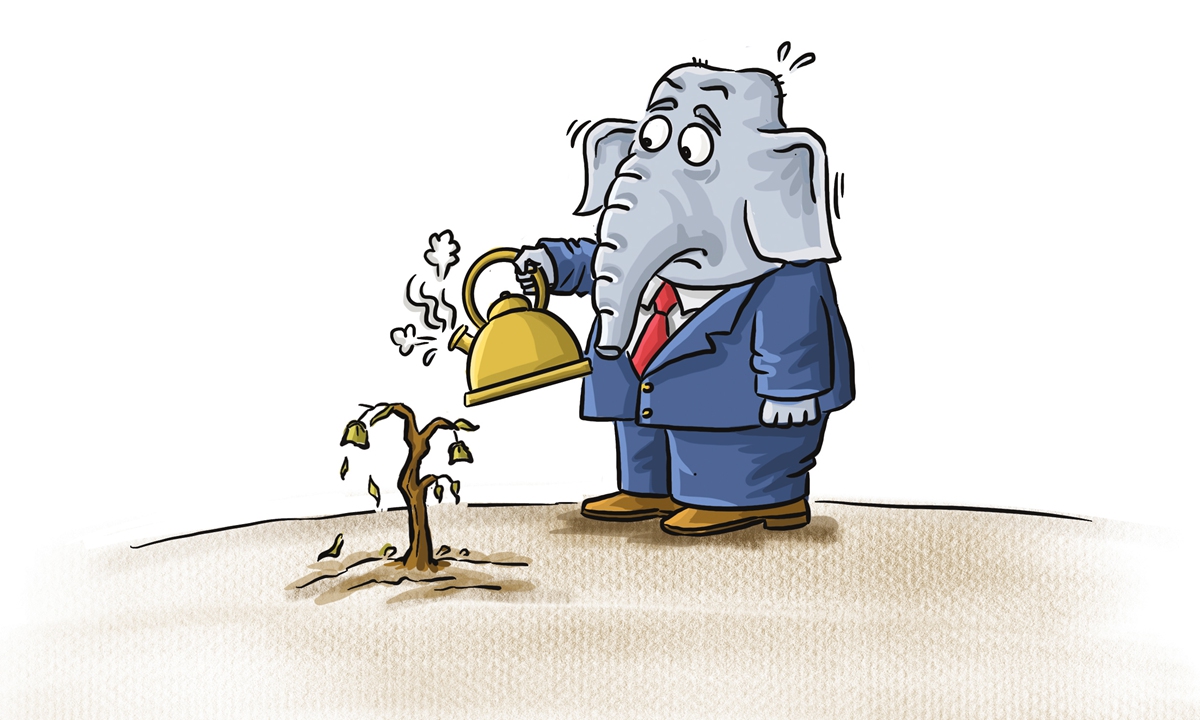COMMENTS / EXPERT ASSESSMENT
Why India’s narrowing trade deficit with China unsustainable?

Illustration: Xia Qing/GT
The latest data shows that trade between China and India slumped in the first three quarters amid the COVID-19 pandemic, and may lead to a decrease in India's trade deficit with China this year. Though it would be in line with New Delhi's intentions in terms of statistics, to keep narrowing the trade deficit is not a realistic target for the nation and any non-economic approach to closing the gap would hurt India's interests.China on Tuesday released its trade data for the first nine months. Trade between China and India slid 10.9 percent year-on-year, with China's exports to India down 17.7 percent and imports from India up 17.7 percent.
Though China's exports to India shrank year-on-year, a breakdown of the monthly data shows a different scenario. China's exports to India reached 46.4 billion yuan ($6.89 billion) in September up from 22.5 billion yuan in April this year, leading the monthly trade surplus with India to bounce back after a period of decrease in the early phase of the pandemic.
The increasing shipment of goods from China to India during the past few months shows India's demand for products made in China, which is a result of the different economic and industrial structures of the two economies and the underlying reason for India's trade deficit with China.
During the past few months, India rolled out provocative measures in both border and economic areas trying to antagonize China, including prolonging the clearance procedures for goods shipped from China and heightening the scrutiny of Chinese investments. Such moves could to some extent drag down its imports from China temporarily which may contribute to a decrease in trade deficit, but they also hurt the interests of India-based businesses, local consumers and the country's business environment - which will all lead to long-term damage to its economy.
Meanwhile, India's year-on-year increase of exports to China during the first nine months was mainly due to rising natural resource shipments, rather than upgrading of its economic or industrial structures. As China rapidly recovered from the pandemic, it has been expanding purchase of resources and raw materials recently. According to the latest data from India's Department of Commerce, China drastically increased imports of mineral resources from India between April and July. For instance, India's exports of aluminum to China rocketed 1,936 percent year-on-year, a nearly 20-fold rise compared to last year.
Over the past few decades, India and China have seen their bilateral trade surge due to mutual complementarities, but an expanding trade deficit with China has been bothering New Delhi. However, simply narrowing its trade deficit with China in terms of statistics is not the best approach. Only by effectively upgrading its industrial structure can India improve its trade pattern with other countries, and this is not a short-term project.
With 7.18 million confirmed COVID-19 infections as of Wednesday, slightly less than the US, India may soon become the pandemic epicenter of the world and see its economic prospects further darkened. But the pandemic will eventually come to an end, and the potential for economic and trade cooperation between China and India will remain. Since border disputes have cooled down recently, it is expected that the Modi administration will gradually resume rationality in trade and economic policies.
The article was compiled based on an interview with Long Xingchun, president of the Chengdu Institute of World Affairs. bizopinion@globaltimes.com.cn



